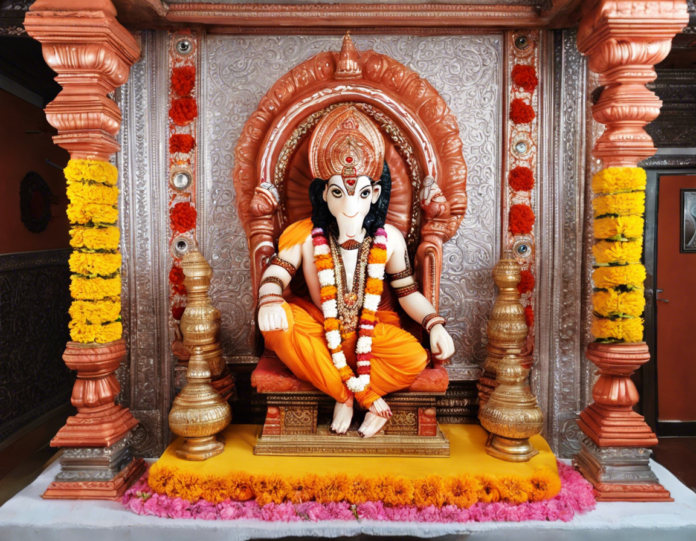The Ram Mandir Murti holds a special significance in the hearts of millions of Hindus worldwide. The consecutive Bhoomi Pujan and Shilanyas ceremonies in Ayodhya marked a monumental moment in Indian history, ushering in a new era for believers of Lord Ram. The grand temple complex, dedicated to the revered deity, is set to feature a towering murti or idol of Lord Ram, which will not only be an architectural marvel but also a profound symbol of faith and heritage.
The Legacy of Lord Ram:
Lord Ram, the seventh incarnation of Lord Vishnu, is a central figure in Hindu mythology and has been venerated for millennia for his righteousness, courage, and humility. The epic tale of the Ramayana narrates his life, adventures, and his unwavering commitment to uphold dharma (righteousness). The devotion and reverence for Lord Ram have transcended generations, with his teachings and ideals serving as a guiding light for millions of devotees.
The Significance of the Ram Mandir Murti:
The construction of the Ram Mandir in Ayodhya and the installation of the murti of Lord Ram hold profound religious, cultural, and emotional importance for Hindus. The murti serves as a physical representation of the divine, allowing devotees to establish a personal connection with the deity during prayers and rituals. It is believed that the presence of the murti embodies the essence and spiritual energy of Lord Ram, infusing the temple with an aura of sanctity and tranquility.
Architectural Splendor and Symbolism:
The murti of Lord Ram in the Ram Mandir is not just a sculpture but a masterpiece of art and craftsmanship. Skilled artisans and sculptors have meticulously crafted the idol, adhering to traditional iconography and design principles mentioned in ancient texts. The murti is not merely an object of worship but a reflection of divine beauty and grace, capturing the essence of Lord Ram's persona.
The murti is often adorned with intricate jewelry, vibrant garments, and symbolic attributes such as the bow and arrow, conch shell, and lotus flower, symbolizing Lord Ram's valor, righteousness, and divinity. The facial expressions, posture, and hand gestures of the idol convey different emotions and messages, inviting devotees to contemplate the various aspects of Lord Ram's character.
Devotion and Pilgrimage:
For devotees of Lord Ram, visiting the Ram Mandir and witnessing the murti is not just a religious obligation but a deeply spiritual experience. The darshan (sight) of the idol is believed to bestow blessings, peace, and fulfillment upon the devotees. Pilgrims from different parts of the country and the world undertake journeys to Ayodhya to offer prayers and seek the divine grace of Lord Ram.
The Ram Mandir Murti becomes a focal point of devotion and bhakti (devotion) during festivals and special occasions dedicated to Lord Ram, such as Ram Navami and Diwali. The temple resonates with the sound of hymns, chants, and bells as devotees throng the premises to express their love and reverence for the deity.
FAQs:
-
Why is the Ram Mandir Murti so significant to Hindus?
The murti of Lord Ram symbolizes the physical presence of the divine and allows devotees to establish a personal connection with the deity, expressing their devotion and seeking blessings. -
What materials are used to make the Ram Mandir Murti?
Skilled artisans use various materials such as marble, sandstone, or metal to create the idol of Lord Ram, ensuring meticulous craftsmanship and attention to detail. -
How do devotees perform rituals in front of the Ram Mandir Murti?
Devotees perform aarti (lighting of lamps), offer flowers, incense, and prasad (sacred food) to the murti, and recite prayers and hymns to seek the blessings of Lord Ram. -
Is the Ram Mandir Murti a symbol of unity and faith for Hindus?
Yes, the construction of the Ram Mandir and the installation of the murti have unified Hindus across different sects and beliefs, reaffirming their shared faith and cultural heritage. -
How does the Ram Mandir Murti inspire devotion and spiritual growth among devotees?
The divine presence of Lord Ram in the form of the murti inspires devotees to cultivate virtues such as love, compassion, and righteousness, guiding them on the path of spiritual evolution and inner transformation.


Recent comments